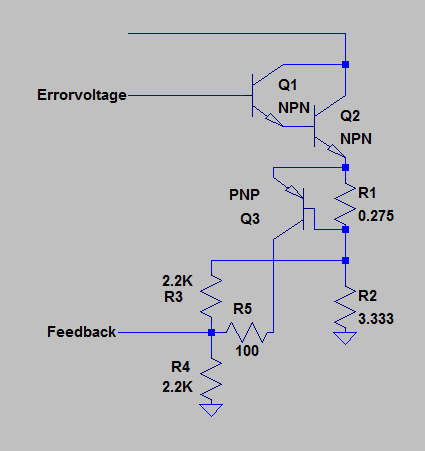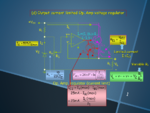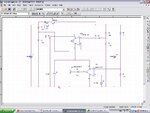jonnybgood
Full Member level 4
I built the attached power supply which in simulation gave very good results. When I built the circuit on a veroboard without the current limiting stage I also had very good regulation.
When I added the current limiting part I noticed that it didn't work as good as the simulation I had a range of about 250mA. I am testing my power supply with 10Ω 5Watts, 3.3Ω % watts and 1Ω % Watts. My current limit is at 2.7Amps.
Therefore I am using the 3.3Ω resistor to set my current limit to 2.7Amps which should leave a 9V across it. I am very careful with regards to ground as I am always measuring voltage with my probe connected to the lead of the rectifier. With the current sense resistor of 0.275Ω as in the schematic, the current limit already kicks in to drop the voltage to 8.6V. On the other hand when I play around different resistances to obtain nearly the 9V back, the current limit with 1Ω load would climb to 2.9Amps.
Is there a way I can improve my current limit maybe a transistor with a different gain. I tried BC549 and BC547 and the two gave me poor results. BDW my darlington is TIP122.
When I added the current limiting part I noticed that it didn't work as good as the simulation I had a range of about 250mA. I am testing my power supply with 10Ω 5Watts, 3.3Ω % watts and 1Ω % Watts. My current limit is at 2.7Amps.
Therefore I am using the 3.3Ω resistor to set my current limit to 2.7Amps which should leave a 9V across it. I am very careful with regards to ground as I am always measuring voltage with my probe connected to the lead of the rectifier. With the current sense resistor of 0.275Ω as in the schematic, the current limit already kicks in to drop the voltage to 8.6V. On the other hand when I play around different resistances to obtain nearly the 9V back, the current limit with 1Ω load would climb to 2.9Amps.
Is there a way I can improve my current limit maybe a transistor with a different gain. I tried BC549 and BC547 and the two gave me poor results. BDW my darlington is TIP122.




